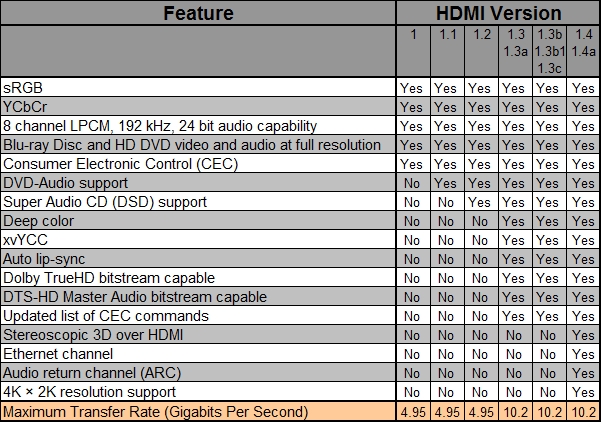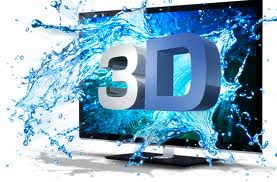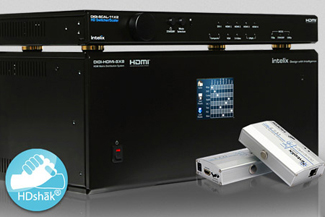
Here to Stay
Right out of the gate we should establish that the most important thing to know about HDMI is that it is here, and it’s here to stay. Whether we like the technology or not, it has become the standard for consumer high definition video. The sun is setting on old analog HD technologies. We could discuss pros and cons of HDMI and component video, but for the most part, it would be a waste of time. That is not to say that there is no place for component video and other technologies, but what makes the most sense is understanding the technology that has become the standard.
What is the Big Deal, Really?
The big deal about HDMI is that it is completely digital, and so, is able to transmit so much information over one cable. All audio (including surround sound), video, IR, Ethernet, EDID, HDCP, etc. is transmitted and received through this one cable. Whereas component cable, for instance, is analog and uses three cables for video and two for audio (stereo) alone.
Another big deal about HDMI is that it is capable of playing copyrighted video that is encrypted. This is one major reason there has been such a push for HDMI technology. HD content providers have long been trying to keep people from freely copying and viewing their materials. Some content is simply unavailable without an HDMI connection and a special key found on a BluRay disc or transmitted via a Pay-Per-View channel, for instance.
 The Geeky Stuff
The Geeky Stuff
This section will go a little deeper and get much more technical. You can skip over it if you aren’t really interested in the details. HDMI simply stands for “High-Definition Multimedia Interface.” There has been an evolving progression of the HDMI standard and specification. The current and “best” is HDMI 1.4. HDMI is a 19 pin (or 19 conductor/wires) cable. The big deal about HDMI 1.4 is that it supports 3D, Ethernet, Audio Return, and higher resolutions. You can see from the chart to the right what cable supports what.
For the most part, just buy devices and cables with the HDMI 1.4 specification. HDMI 1.3 is ok too if you won’t really be watching 3D or using the other features. Some cables don’t have “1.3” or “1.4” even on them though. This just makes it more difficult for consumers. Be weary of this. What you’ll have to do is line up what they do say about the cable with the chart to the right to figure out which cable it is.
We looked at HDMI cables at Walmart.com just for this article, and none of the cables said anything about HDMI 1.4. The good thing is that most HDMI cables being sold at the major retailers appear to be HDMI 1.3 or better. It is certainly still something to keep an eye out for, as there is a lot of 1.2 stock yet to “dump.” Best Buy was better about listing the specification, but still many of their cables didn’t specify 1.3 or 1.4. What’s worse, many didn’t have enough information to tell much other than it was an HDMI cable of some sort and how long it was.
 So What’s the Point
So What’s the Point
The point here should be this: Don’t buy a cable that has something to hide, or from a retailer that does either. If it is HDMI 1.3, or especially 1.4, it is a selling point to mention. If they don’t, it’s likely not or they are trying to pull one on you. BUY FROM A COMPANY YOU TRUST! FYI, we sell HDMI cables for much less than the major retailers. That is not why we wrote this article, but if we can help you in any way, here we are.
What else do I need to know?
The above is a great start to understanding HDMI, for most simple applications. It will get you by just fine. Consider hiring a professional if you’re still a little confused or have a more complex project in mind. There is truly so much to know. Rather than be a “jack of all trades” and not be really good at any one of them, it might be best to focus on what you’re good at and hire someone to do what their good at. Having said that, there are still a few last things to mention for this introductory article.
Many of the problems in dealing with HDMI has to do with a combination of three factors- length of cable needed to get from your source to your display, the handling and transmission of EDID information, and the handling and transmission of the HDCP keys.
 Extended Display Identification Data or EDID is the information that a display will send to a video source (i.e. computer video card, AV receiver, HDMI matrix, etc.) so that it knows what capabilities the display has. If this information is not managed properly, you can have an intermittent video signal or no signal at all.
Extended Display Identification Data or EDID is the information that a display will send to a video source (i.e. computer video card, AV receiver, HDMI matrix, etc.) so that it knows what capabilities the display has. If this information is not managed properly, you can have an intermittent video signal or no signal at all.
High-bandwidth Digital Content Protection or HDCP is an encryption scheme in place so that only those with authorization can view an encrypted HD signal. This has been known to cause a lot of issues, particularly when you’re trying to distribute HD content throughout your whole house or business. If you want to display encrypted contend (i.e. a BluRay movie) onto more than one display, you need special equipment that will manage the HDCP “key” well.
Lastly, you cannot use just any old HDMI cable after about 6ft. The longer the video “run,” the higher the gauge of HDMI cable conductors or wires need to be and the better the interference shielding it will need. You can also achieve longer distances with HDMI amplifiers and extenders. All of these three issues can range from simple to pretty hairy. Typically, you will want a knowledgeable technician to help you. Again, we are here when you need us.


